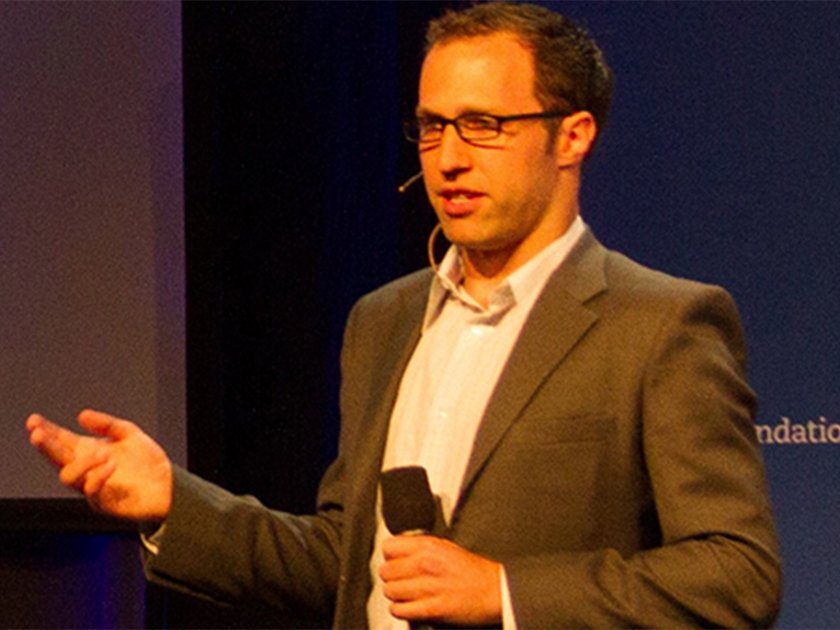A large skills gap is preventing workers from filling the thousands of jobs available in the technology sector, according to Matt Stempeck, Director of Civic Technology at Microsoft.
Mr. Stempeck spoke to the Independent Commission on Multilateralism’s Warren Hoge on how companies like Microsoft are working toward addressing the problem and how the model can be applied around the world.
The conversation took place on the margins of the ICM’s retreat on engaging, supporting, and empowering global youth, held on February 25-26, which addressed the challenges faced by global youth.
One subject of today is economic empowerment and opportunity. And, of course, that quickly gets us to one word, and that word is “jobs.” I know that job creation is not just about a lack of jobs in the world. What is it about, and how can it be addressed?
My team at Microsoft focuses on something called the “skills gap” and we’re focused very much here in New York City, but the issue came up today about the same thing in Tunisia and all around the world. You have companies—including tech companies—desperate for skilled labor to fill open positions, in some cases, thousands of positions in one city that they haven’t been able to fill. And you have people living in that city who are desperate for career-tracked, good-paying jobs. And so it’s a gap between the current workforce’s skill set and the skills needed to accomplish the jobs that are open. And in some way, that comes back to the education system to make sure that the local workforce has those skills, but we’re finding more and more creative education and rapid-learning programs that help the local workforce gain those skills and get those jobs.
I think that’s what’s behind Microsoft’s Tech Jobs Academy that you have here in New York. Tell us about that and how that works.
Tech Jobs Academy is part of Mayor Bill de Blasio’s Tech Talent Pipeline. The Tech Talent Pipeline is a $10 million program, earmarking much larger employment training funds that the city has. The context here is that the federal government in the US and New York both have large amounts of training dollars available to train the workforce. But what we’re trying to do with Tech Jobs Academy is figure out the modern tech jobs and tech careers that will be a growth career, that someone in New York can quickly get up to speed on and learn and be placed in, with a minimal amount of training.
We’ve partnered with the mayor’s Tech Talent Pipeline Program and the City University of New York, and we have surveyed thousands of companies that work with Microsoft in New York City to ask them: “What are those jobs that you’re desperate to hire for, that you can’t fill and the skill sets that are really in need?”
One of the main skill sets that came up was database and server administration. And so you hear a lot these days about learning to code programs, and we think that’s great and there’s a lot of software development jobs out there. But it turns out that a lot of small and medium-sized business in New York City want server and cloud administration. So we adapted a curriculum that Microsoft had for military service members, for when they transition off of military bases and into the workforce, and we adapted it for the New York City environment and came up with a 16-week, four-month program that’s completely free.
We had 300 or so applicants. We had spots for 25—fairly selective—for the first class as we proved out the model. And at the end of that program we’re hoping to have very high placement into not just jobs, but career-growth employment in the IT industry that will basically economically empower people and their families for years to come. And what we’re talking about here is the difference between making maybe $30,000 a year and $70,000. Part of this training is you get to become certified and actually build the professional skill set in this area in a way that employers can recognize, whether or not you have a college degree. So we explicitly recruited folks in New York who were unemployed or underemployed, without college degrees, making under $50,000 a year, and very diverse in terms of demographics. And with that, we’re hoping to have very high employment going forward.
How about people who have not really had any opportunity at education? Are you able to find them, locate them, and educate them?
That’s a great question, because one of the main things we tested for and looked for in our applicants was tenacity, more so than formal education. While it helped if people had some exposure to cloud and server administration, we’re also looking for people that were just willing to work very hard and had the capacity for this work.
The whole point of our program is training on the specifics. What’s great is the fact that many of these businesses really who are hungry to hire people for these positions, they’re not looking for the Ivy League degrees: they’re looking for someone who can do the job. That’s a really nice thing from a tech training perspective, because if you can train someone to do that job, that’s a perfect match and it’s a win-win.
Matt, I’m an old-fashioned guy. And as I listen to you, I’m thinking, “Oh, he’s talking about vocational education.” And yet, I heard today from other people, “Watch the mindset for vocational education.” What does that mean, what are they talking about?
Vocational education in the US is sort of an area where, it’s related to “tracking” in schools. Where, at a fairly young age, teachers and administrators in schools might make the decision that one group of students is bound for liberal arts education and become the future business leaders and lawyers of America, while the others should go to the wood shop and learn how to do skilled, but rote, labor. And all of that problem aside—of tracking students when they’re very young—you also just have an issue that most vocational education programs haven’t been updated in decades.
And so even in terms of America’s middle class and skilled labor, in terms of manufacturing jobs, a lot of those jobs have moved, and the educational programs haven’t kept up with the modern economy. So one thing that many programs are looking to now is basically to speed up the feedback loop between industry and education and help adapt curriculum to be more reflective of the jobs that exist today.
Your Tech Jobs Academy also must depend on the other end. That is, the businesses that are going to have the opportunities, and maybe, I presume, do the training. Is that true?
We’re doing the training, but you’re absolutely right that it depends on the businesses. And so, the entire curriculum is informed by the survey that the businesses took, where they stated their needs for certain skill sets. It’s a four-month program, so after that first class is over, we’re going to do the survey again and we’re going to adapt the program immediately after the first four months, which, if you know anything about curricula in academia, is usually a much longer cycle before a curriculum gets updated. We believe that, especially in the technology sector, you need to stay with a much faster feedback loop to the jobs that are open.
The Tech Jobs Academy is here in New York and this is a global problem. Is this something you are replicating in other places around the world?
We’re really hoping that this model will work in many places. The Tech Talent Pipeline that Mayor de Blasio created in New York is part of President Obama’s TechHire Initiative, which is an umbrella of tech training programs like this one. We have some inbound interest from a few other cities in the US, at least, to take this model. What’s nice about this model is that it’s sort of a win-win-win. The funding exists already: it’s about repurposing it for a more modern and accelerated learning program. Employers are desperate to hire for these positions, and many cities have a very capable but currently undereducated—in these specific skills—workforce. We’re hoping that if we connect those three constituencies, the model will work in many places.

